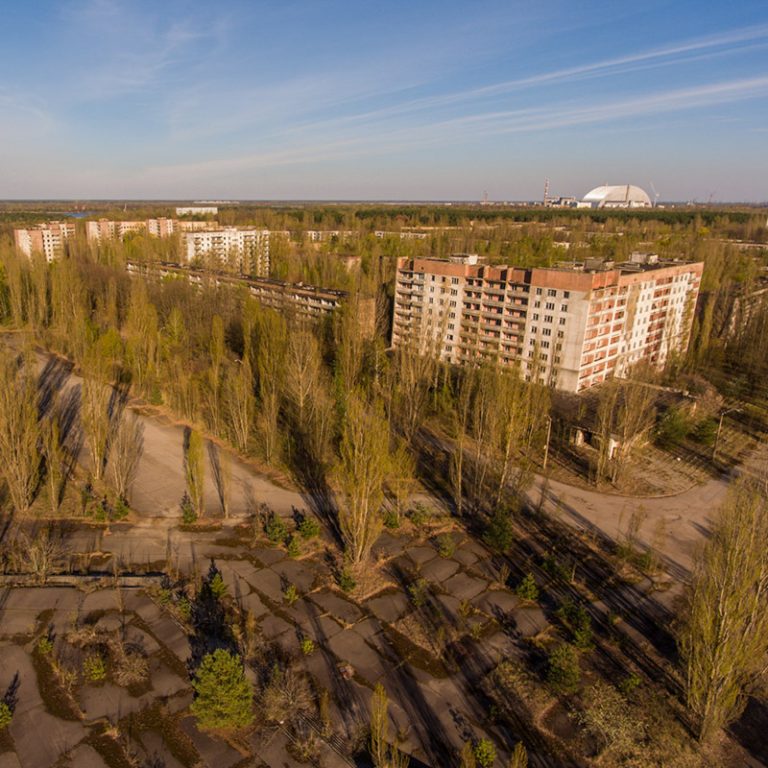
The night of April 26, 1986, in the city of Pripyat, Polissia, had occurred the biggest catastrophe in the history of nuclear energy. The explosion at the fourth unit of the Chornobyl Nuclear Power Station led to tragic consequences with a big number of casualties and immense economic losses.
During the four years of our expeditions, we have come to the Chornobyl Exclusion zone and its outskirts multiple times, mapping various locations and recording different stories that reflect the influence of the accident on life in the region.
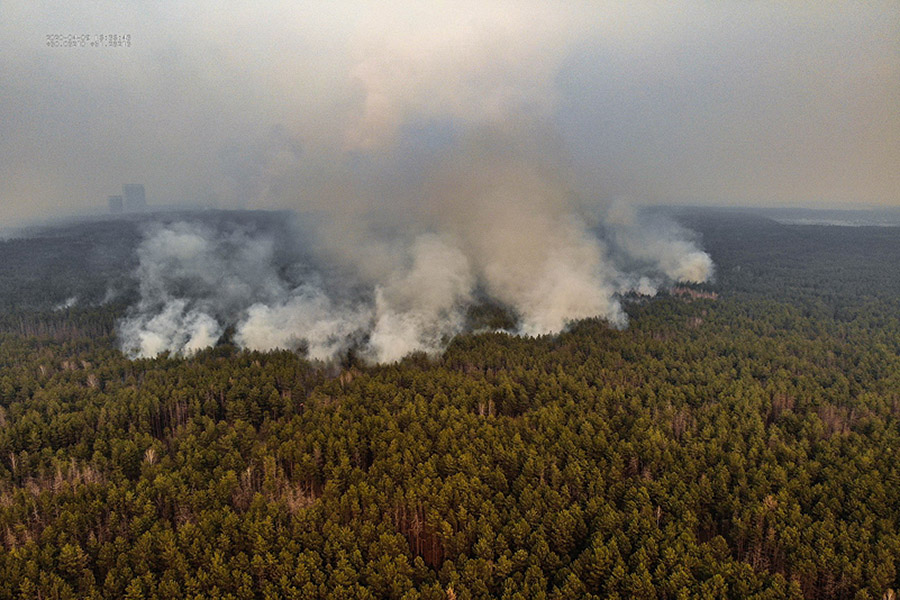
Picture by Oleksandr Syrota.
From the beginning of April 2020, large scale forest fires affect the territory of the Chornobyl zone. Hundreds of people and units of equipment are involved in the fire extinguishing. This is not the first fire in the area, however, after a warm and dry winter, the flames spread way faster and cover huge territories of fields with dry grass and forests in the Exclusion Zone and its outskirts. The fires have become a major blow to the local ecosystem. Small and medium-sized animals suffered the most since they are unable to move around fast and escape the flames and smoke. The fire destroyed a big portion of forests, abandoned villages, and tourist sites of the Exclusion Zone.
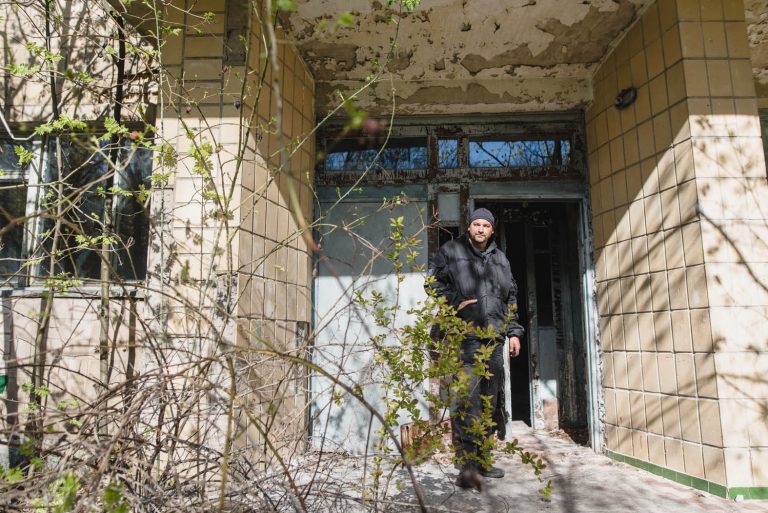
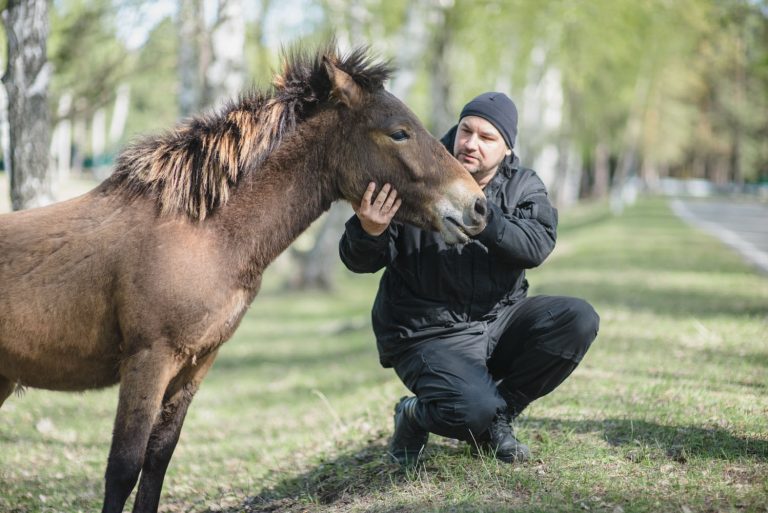
slideshow
A Return to the Exclusion Zone
Prypiat is the city that saw bright prospects and terrible consequences. For the last 30 years, this is an abandoned spot, contaminated by radiation. Today Prypiat is the subject of legends, the territory of dreary scenes, and a sign of nature’s superiority. Still, this is a potential city-museum of the international level. It’s a landmark of an enormous technogenic accident. Ex-residents of Prypiat assure that everyone should visit this place at least once in their lifetime. They say you should pay a visit and do your best to prevent the rise of a new ghost town.
Oleksandr Syrota had spent most of his childhood in Prypiat. When the accident took place. Oleksandr was 10 years old. Many years after the evacuation the city beckoned him back. Today, Oleksandr writes and shoots documentary projects dedicated to Prypiat and Chornobyl tragedy. He organizes and guides original tours in the Exclusion Zone, as well as heads the international non-governmental organization “Tsentr Prypiat.com” and is a member of the Public Council at the State Agency of Ukraine on Exclusion Zone management.
An interview with Oleksandr in VR format
Oleksandr has also become one of the characters in the project “Ukrainer. The movie”, six stories about a regular day in Ukraine woven by unusual Ukrainians. In the movie, the explorer records the regeneration of the local ecosystem and the return of the wildlife.

Self-Settlers of Chornobyl
The scale of the accident and the evacuation of all the residents became known only the next day after the catastrophe. At the same time, people were forcibly evicted from the territory which is known today as the “exclusion zone”.
An interrupted business, unfinished homework, undercooked dinner — this is how the events of the evening when the evacuation started can be imagined today. The residents of the cities Prypiat, Chornobyl, towns, and neighbouring villages were leaving their places for a short time, for three days maximum, as they were told. None of them could imagine the scale of the disaster and did not suspect that they would have to leave their homes forever.
When the level of contamination was publicly announced, the life of many locals changed forever. No one planned to return, because the radiation was dangerous — everyone was telling that. For most of the evacuated, the fear of the invisible has won over the desire to come back home; almost everyone stayed in a new place. Everyone but self-settlers (“samosely” in Ukrainian).
Self-Settlers of Chornobyl in VR
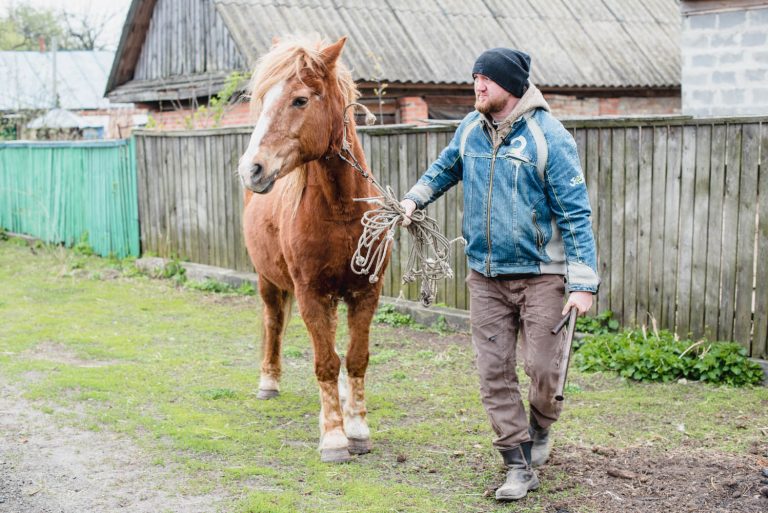
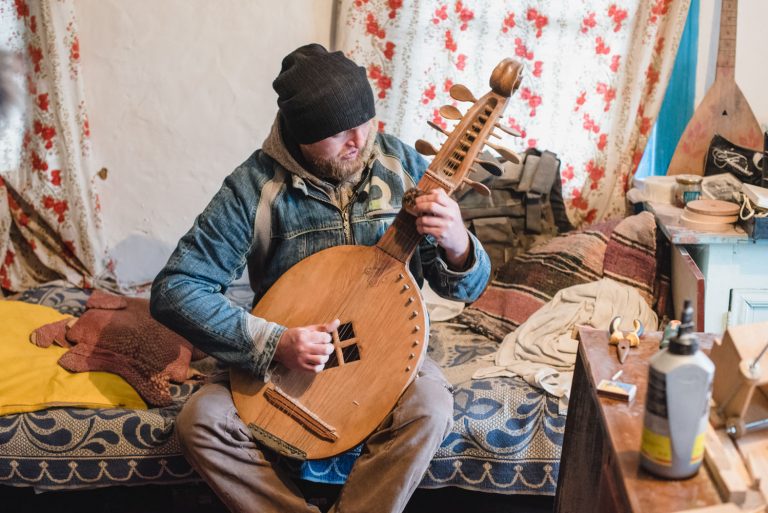
slideshow
Prybirsk: Life on the Exclusion Zone Frontier.
Prybirsk in Polissia could be just a picturesque village not far from Chornobyl. It could be known only by locals and some very curious tourists, but thanks to a couple of indifferent activists the village got re-energized. The festival “Chornobyl-Renaissance” was held there twice already, the school and community center got repaired, and the tourist infrastructure is getting developed. Willingness of one person to change things was taken up by others for the sake of a common goal.
Prypiat’s Birthday
On February 4th, 2020, the city of Prypiat would turn 50 years old. A number of state and non-governmental organizations, museums, and projects that research the topic of the Chornobyl catastrophe held an art event that day demonstrating the new meanings of Prypiat as an art center.
In 1986 Prypiat seized its existence as a city of energy sector workers. However, with the lapse of time, it turned into the center of the Exclusion Zone and an art platform of its own kind. Art becomes a tool of rethinking and preservance of the historic memory about Chornobyl accident and its consequences for young generation particularly.
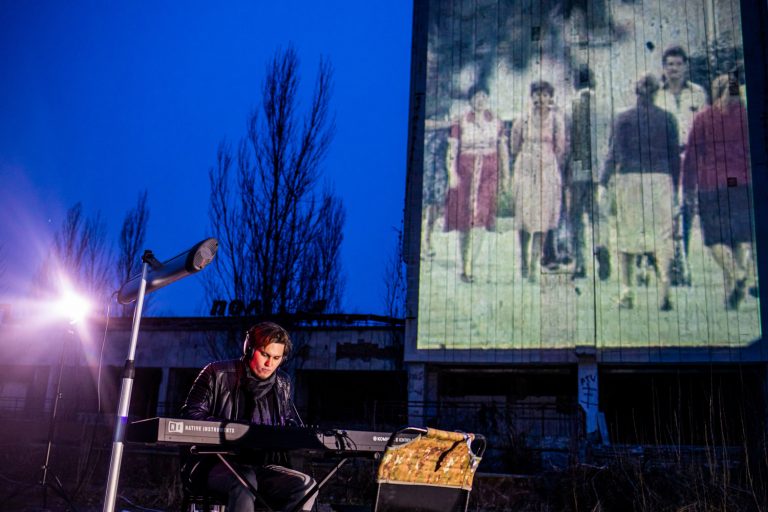
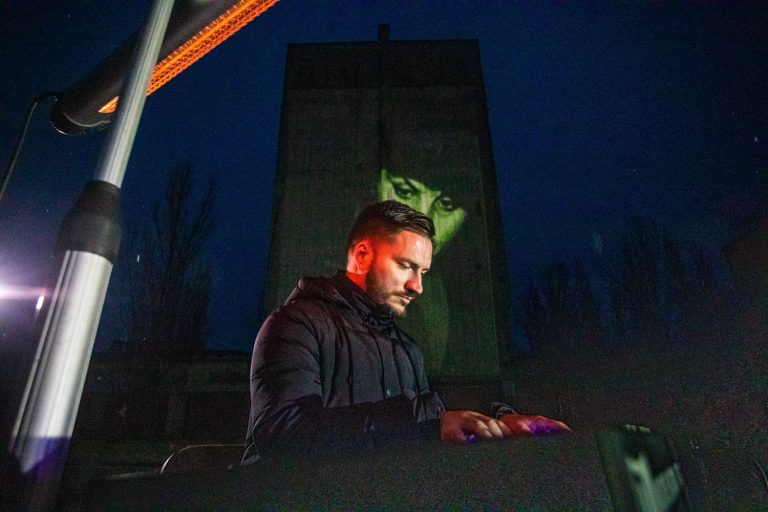
slideshow
A project AFTERFACT by Valeriy and Svitlana Korshunov draws people’s attention to the Chornobyl topic through media art. They presented a 25-meter projection on the hotel Polissia under the name Prometheus. At first, they streamed chronicles of a newly built Prypiat , afterwards, they showed a 20-minute animation of the myth about Prometheus, who is the symbol of the city.
On the central square of the city musicians Lesyk Yakymchuk and Pol Solonar, together with composer and sound designer Volodymyr Savin, performed a live improvisation using virtual “sound museum” PRIPYAT Pianos.
PRIPYAT Pianos combines the sound of 20 pianos from Prypiat that were abandoned in the city after the accident. These instruments had been silent for 30 years until Volodymyr Savin found them and recorded them creating a full-scale virtual instrument.

“Duga” as a monument to a soviet failure.
“Duga” is the last still-standing object of the USSR nuclear shield, known in the western mass media as “Russian Woodpecker”. The brightest minds were involved in this project and all data about it is still classified. Why this technological monument is also called “the monument to a failure” — check out in our video.
Slavutych
Slavutych is the youngest city in Ukraine and was founded right after the Chernobyl accident for the purposes of the evacuation of Prypiat inhabitants. It was built in two years as a “soviet utopia” with different architectural style cottages and a great number of green zones. The city still has a unique atmosphere.

